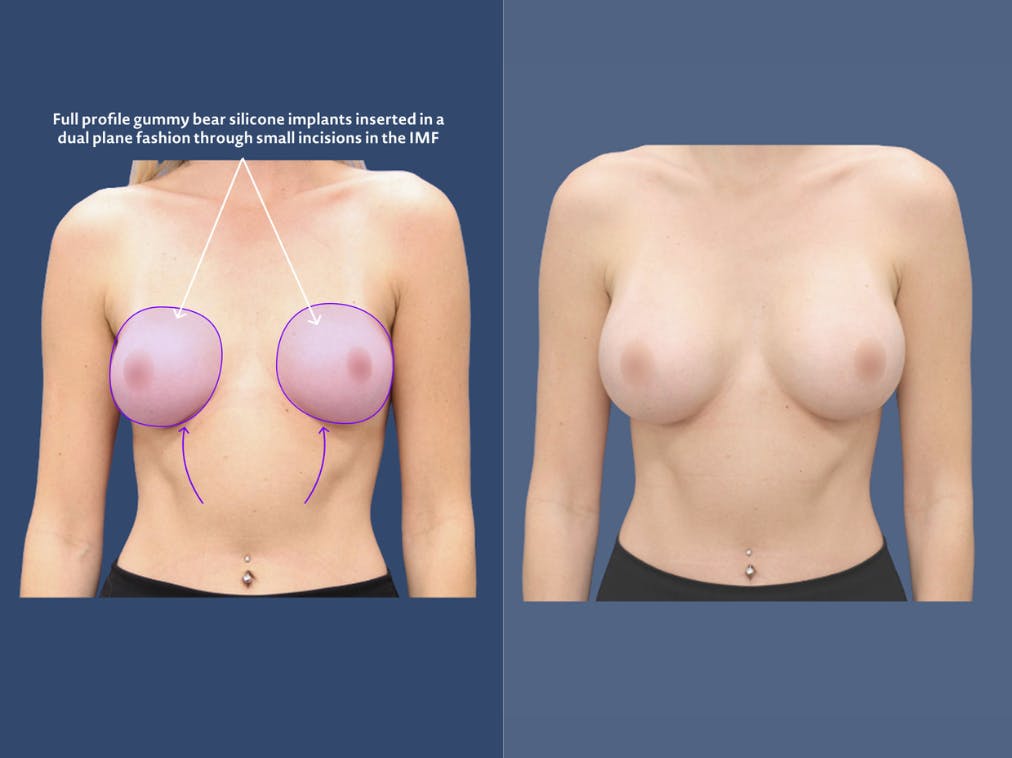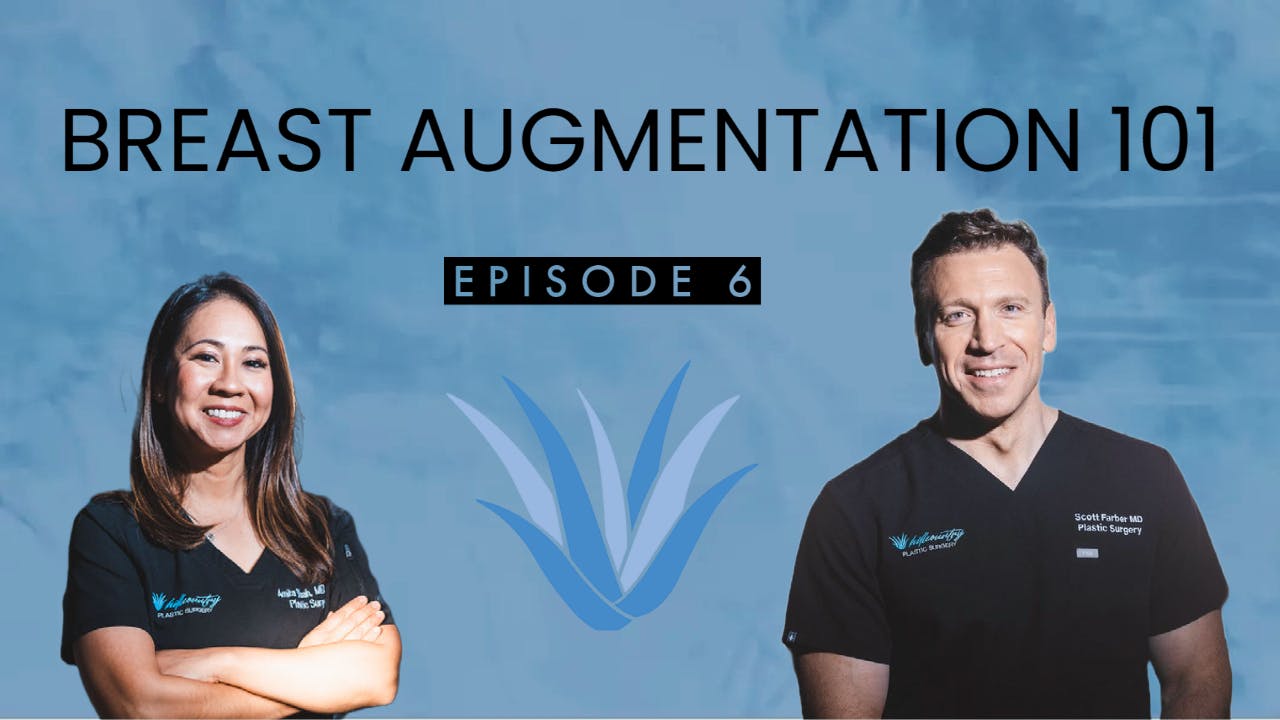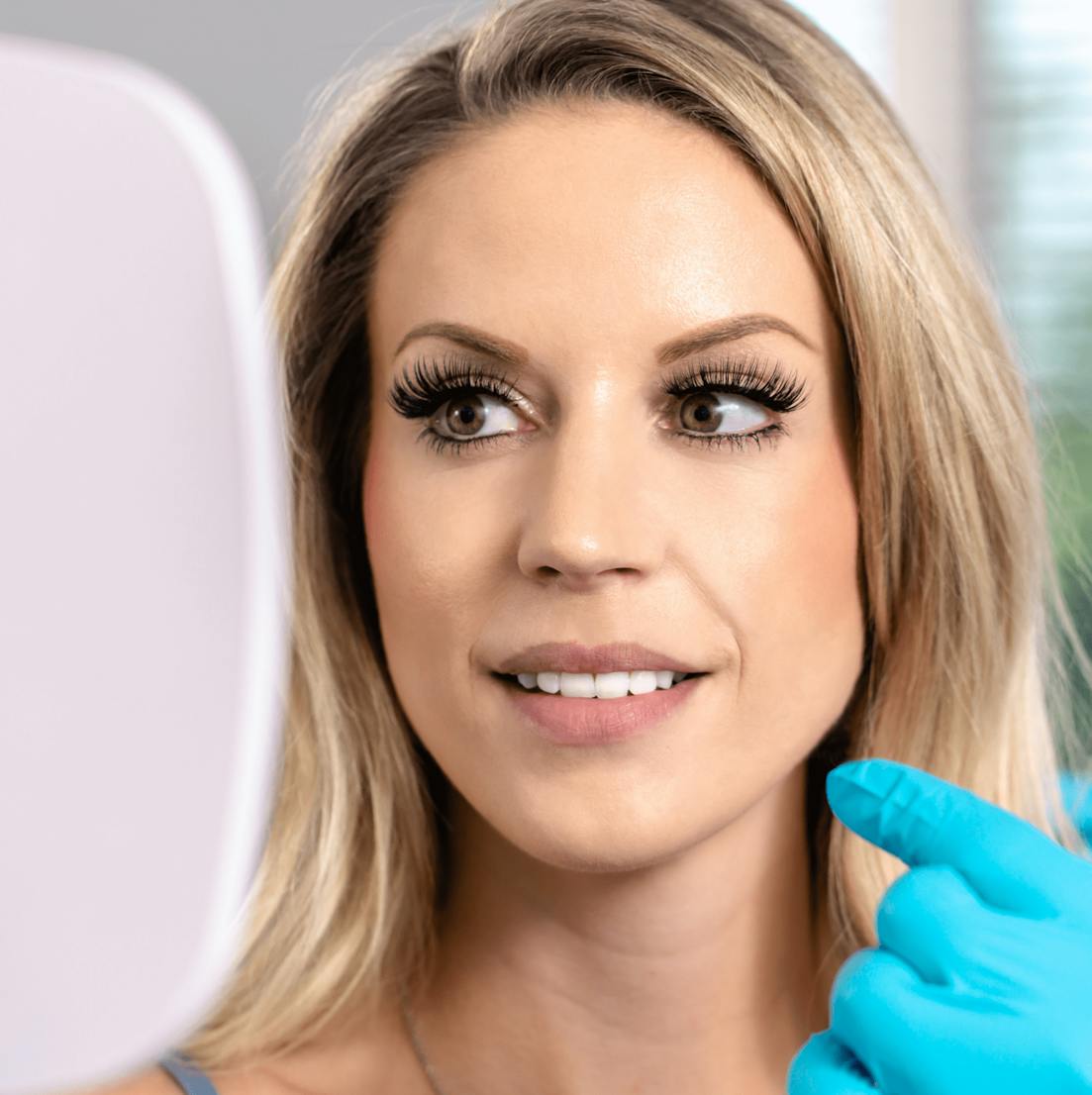At Hill Country Plastic Surgery, your breast augmentation in San Antonio will give you flattering proportions and increased confidence.
Implant Type, Placement and Incision Options
What is the Best Breast Implant Type?
At Hill Country Plastic Surgery, we offer a range of advanced breast implant options to suit your body and goals. Our board-certified plastic surgeons work closely with you to select the best implant for your lifestyle, anatomy, and aesthetic preferences. We offer two FDA-approved implant types:
- Silicone implants, known for their natural feel and look.
- Saline implants, filled with sterile saltwater after placement, allow for a smaller incision and size flexibility.
We are also proud to offer Motiva breast implants, a next-generation silicone implant designed for enhanced safety, durability, and a beautifully natural feel. Motiva implants are known for their innovative shell technology, lower risk of complications, and excellent aesthetic outcomes, making them a great option for women seeking premium results.
What is the Best Breast Implant Placement?
Each approach offers unique benefits depending on your body type and desired results. During your consultation, you'll have the opportunity to discuss the look you want to achieve. You can choose from three placement techniques:
- Subglandular (above the muscle)
- Submuscular (under the muscle)
- Dual plane (partially under the muscle)
Based on your goals and anatomy, your surgeon will recommend the most appropriate placement option to deliver a natural, balanced result while minimizing risk. To learn more, please visit this page.











